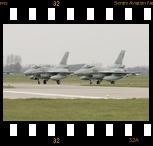
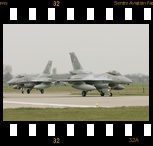
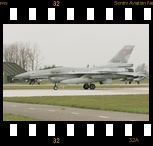
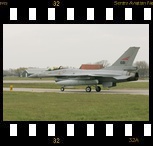
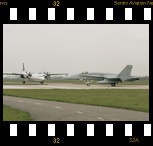
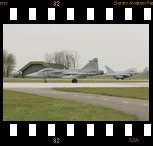
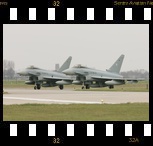
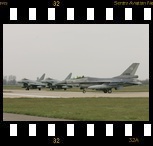
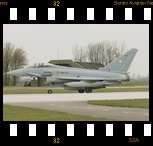
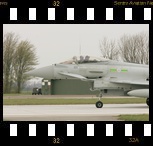
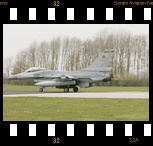
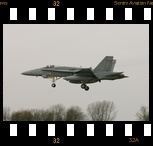
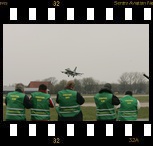
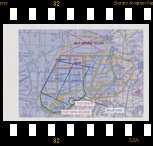
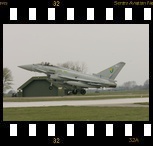
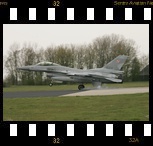
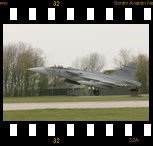
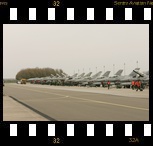

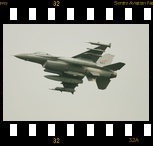
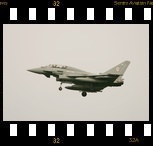
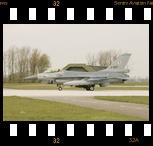
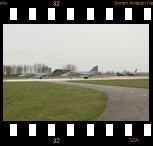

The aim of the exercise is to bring large fleets of different types of aircraft from various countries into the air, to have them exercising realistic aiwarefare scenarios. Throughout the years, the 323 squadron TACTES (Tactical Training Evaluation and Standardization) collected dozens of realistic scenarios. And each year, the scenarios will be improved after the exercises and operational ‘lessons learned’. As there are NATO countries and Partnership-for-Peace countries involved, the NATO procedures can not always be used, so a mix of scenarios is available for the aircrews. Frisian Flag is an exercise “for pilots, by pilots”, all scenarios are being developed by the pilots. There is no high level command centre ‘dictating’ the senarios to be used, it is all up to the pilots to decide which scenario will be used. During Frisian Flag, several scenarios are trained, scenarios that are needed during future NRF deployments, real-world scenarios from the Afghanistan theatre and scenarios from other exercises like RedFlag in the USA and MapleFlag in Canada. After each mission a thorough debriefing takes place, whereby the ‘lessons learned’ will be incorporated into the future missions,
Missions are planned many hours before take-off, whereby the role of mission commander is distributed over all senior participants. The missions are getting more and more complex during the 2 weeks, with more and more complex and difficult items added to the scenarios, like air-to-air refueling prior and during the combat missions.. After each mission, a large debriefing takes place, lasting several hours; with all data combined (LINK16, datarecorders, radar images, etc), it is possible to get a complete and detailed overview of each mission
The airspaces of the Netherlands, Germany and Denmark overhead the North Sea, are combined into 1 large airspace, under control of the Frisian Flag aircontrollers. When a mission is flown, ¼ of the pilots play the role of ‘red air’ simulating unfriendly aircraft for the remaining ¾ of the ‘blue air’ pilots.
The Royal Dutch Air Force (‘Koninklijke Luchtmacht’) invites the participating countries for the exercise, but all the bills are payed by the participants themselves. The hotels around Leeuwarden airbase are very pleased by the exercise, as more than 800 participants need to stay in hotels nearby for 2 weeks.
NDMC323 squadron
The Leeuwarden based 323 squadron TACTESS (TACtical Training, Evaluation and Standardisation Squadron) is part of the NATO Response Force (NRF) and they have the task to define, standardize and evaluate the procedures and tactics for the Dutch F-16 squadrons. In 2007, the 323 squadron passed their exam for the NRF force during 3 evaluation cycles at Eindhoven airbase. Besides the Frisian Flag exercise, the 323 squadron organises the FWIT (Fighter Weapons Instructor) course and the ATTIC course (Advanced Tactical and Technology Intelligence Course) at Leeuwarden AB.History
The Frisian Flag exercise started in the early 1990’s and the format changed and increased every year a bit until in 1998 the massive involvement of foreign aircraft made it a “Flag” exercise. A low-budget, close-at-home, small version of a Red Flag (in the USA) or Maple Flag (in Canada) exercises. Throughout the years the number of participants and their origins varied. Swedish Gripens and Finnish F/A-18s participated in earlier editions, which could have up to 45 participating aircraft. On the other side, 8 USAFE F-15s and a Norwegian ECM Falcon were the only foreign participants in the 2009 version of Frisian Flag. In 2010 Frisian Flag was cancelled after 3 days due to volcanic ashes and in 2011 the exercise was cancelled due to the operations overhead Libya. One of the highlights in the history of Frisian Flag is the 1999 edition, whereby the US Navy participated with F-14s, F-18s and EA-6Bs from the USS Kennedy.Interview Polish pilots
After the missions on Tueday 17th, there was the possibility to do an interview with 2 Polish pilots, LtCol Nowak ‘Palm’ and Capt Jedrzejczak ‘Jed’ of the 10th squadron of the Polish airbase of Lask. This squadron has a very busy year, after an earlier exercise in the Middle-East, and Frisian Flag in the Netherlands in April, they will go to Alaska (USA) to participate in the ‘Red-Flag Alaska’ exercise later. The Polish pilots participate in many exercises and fly many hours in their F-16C/D models. On average a Polish pilots flies some 200 hours per year, which is well above the NATO standard of flying 180 hours per year. With the high number of flying hours, the aim to With 6 aircraft, 10 pilots and 65 personnel, they stayed for 2 weeks at Leeuwarden airbase, whereby all pilots need to be combat ready and qualified, also to be qualified for air-to-air refueling. The aim for the polish pilots was to practice airwarfare in a complicated environment with many different aircraft. Frisian Flag was a very good exercise to participate as the operating areas were very close to the airbase, and the operating areas do not have limitations above the North Sea. In Poland, the number of operating areas get more and more restricted. During the second week of the exercise, the Polish pilots will be mission commander twice, to be responsible for The F-16s are equipped with LINK16 and can carry the AIM-9, AIM-120, Laser Guided Bombs and JDAM. The jamming equipment is not yet operational, but it will be operational soon.The greatest ‘winner’ in this exercise for the Polish pilots, is the opportunity to talk with other F-16 pilots, to exchange information and experiences within the F-16 community in Europe. And the experience to fly with and against other aircraft types like the Eurofighter, Gripen and Hornet is of high value to them.
Credits Frisian Flag Leeuwarden
Thanks to the PAO department of the Leeuwarden airbase and the Royal Dutch Airforce.


 Back to top of page
Back to top of page Sentry home page.
Sentry home page.